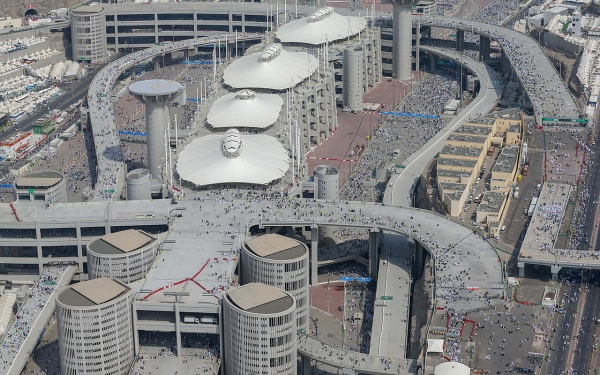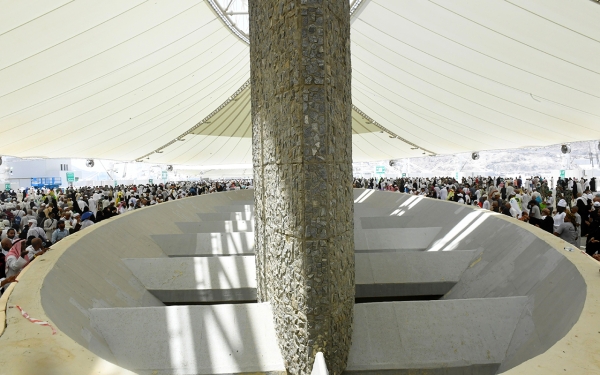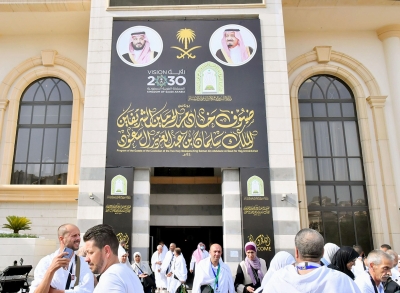

Jamarat Complex is a complex designed specifically for walking Hajj pilgrims at the Holy Site of Mina in Makkah al-Mukarramah in the Kingdom of Saudi Arabia to perform the Stoning of the Devil. There are three Jamarat (pillars): the middle jamrah (al-Jamarah al-Wusta), the smallest jamrah (al-Jamarah al-Sughra), and the largest jamrah (al-Jamarah al-Kubra), also called al-Aqaba.
Jamarat complex design
The complex consists of five floors and has been designed to support twelve floors and five million pilgrims in the future. Its cost exceeded SAR4.2 billion, and its capacity is three hundred thousand pilgrims an hour. It is the first of the Holy Sites complexes after Makkah al Mukarramah.
Services at the Jamarat complex
Jamarat complex contains supportive services, a tunnel to separate vehicles from pedestrians, in addition to three further tunnels, eleven entrances to the Jamarat, twelve exits on all sides, landing pads for emergency helicopters, cooling systems, and a system for pumping coolant spray onto pilgrims and the Jamarat areas to reduce the temperature to twenty-nine degrees in the summer.
Development of Jamarat complex
Jamarat complex was built in 1974, during the reign of King Faisal Bin Abdulaziz Al Saud. The first expansion of the Jamarat Bridge was increasing its area by forty m, with two risers from its eastern and western sides and two slopes next to Jamarat al-Aqaba from the northern and southern sides.
The bridge was expanded in 1982 to become 120 m long and twenty m wide. It was expanded again in 1987, becoming eighty m wide and 520 m long. Its total area in that year reached 57,600 m.
In 1995, the bridge was modified in various ways. Further modifications followed ten years later, which included designing the bridge, modifying the signs in the center of the place for throwing pebbles, creating emergency exits and directional signs including cautionary signs in the different languages of pilgrims against overcrowding, and connecting screens and signs to the residences of pilgrims.
Many expansions were made to the bridge over the years, the most recent of which was the construction of the current complex in 2009. It is now 950 m long and eighty m wide. The Jamarat themselves were modernized to their current oval forms.
Related quizzes


